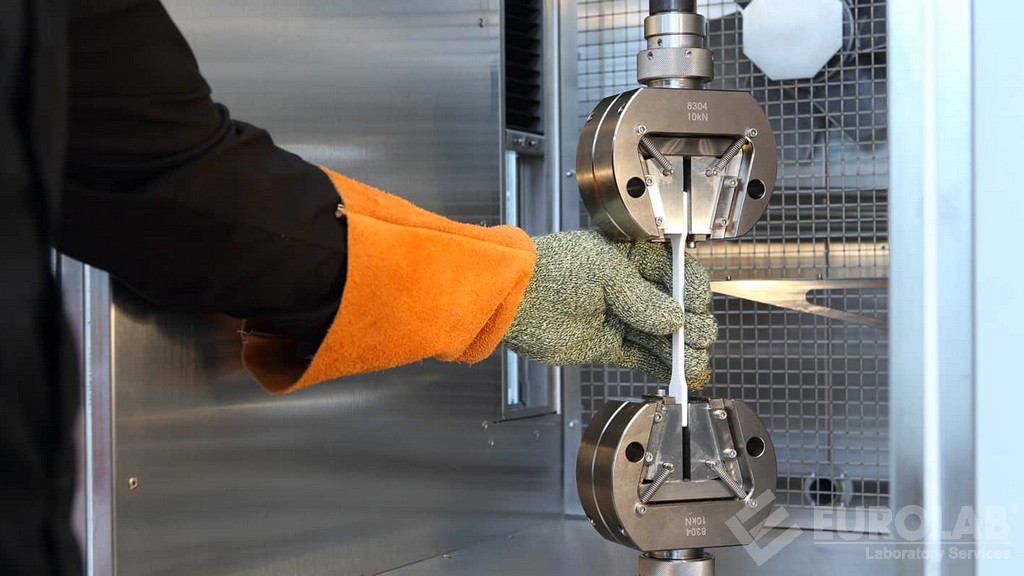EN 14112 Oxidation Stability of Chemical Additives Rancimat Test
The EN 14112 standard specifies the procedure for determining the oxidation stability of chemical additives used in oil and gas production processes. This test is particularly important for ensuring that the chemical additives do not degrade prematurely, which could lead to operational inefficiencies or safety hazards.
During this Rancimat test, a sample of the additive is heated under controlled conditions to simulate real-world exposure to elevated temperatures. The test measures how quickly the additive undergoes oxidative degradation by monitoring changes in weight and color. Oxidation stability is critical for additives that are used in high-temperature environments such as those found in oil wells or gas processing facilities.
The Rancimat apparatus, which consists of a heating block with temperature control and an integrated balance, allows precise measurement of the mass loss over time. The test typically runs for several hours, during which the temperature is increased gradually to simulate real-world conditions. The results provide valuable insights into the additive's performance under stress.
The testing parameters are carefully specified in EN 14112, ensuring consistency and reliability across different laboratories. Specimen preparation involves accurately weighing a representative sample of the chemical additive and placing it into the Rancimat apparatus. The test temperature is often set between 90°C to 250°C depending on the additive's expected operating range.
The use of this method ensures compliance with international standards, which is crucial for regulatory compliance in the oil and gas industry. By adhering to EN 14112, companies can demonstrate that their chemical additives meet stringent quality and performance criteria.
| Parameter | Description |
|---|---|
| Test Temperature Range | 90°C to 250°C |
| Mass Loss Measurement | Precision balance integrated into the Rancimat apparatus |
| Heating Profile | Gradual increase in temperature over time |
| Sample Weight | 10-50 mg depending on additive type |
The results of the EN 14112 test are typically reported as mass loss per unit time. This data helps in understanding the rate of oxidative degradation and allows for comparison with other additives or previous batches. The higher the mass loss, the lower the oxidation stability of the additive.
Understanding the oxidation stability is crucial for optimizing the use of chemical additives in oil and gas production processes. By selecting additives that exhibit high oxidation stability, companies can extend the operational life of their equipment and reduce maintenance costs.
Scope and Methodology
The scope of the EN 14112 test is to evaluate the oxidation resistance of chemical additives that are used in oil and gas production processes. This includes additives such as corrosion inhibitors, antioxidants, and dispersants.
The methodology involves several key steps:
- Sample preparation: Accurately weigh a representative sample of the additive.
- Apparatus setup: Place the sample into the Rancimat apparatus and set the desired temperature range.
- Testing: Run the test for the specified duration, typically several hours.
- Data analysis: Measure mass loss over time and calculate oxidation stability.
The EN 14112 standard provides detailed instructions on how to perform each step of the test. Compliance with these procedures ensures accurate and reliable results.
It is important to note that the test conditions closely mimic real-world scenarios, making it a valuable tool for quality assurance in the oil and gas industry.
Benefits
- Enhanced Product Quality: Ensures consistent product performance by identifying additives with poor oxidation stability early in the development process.
- Regulatory Compliance: Demonstrates adherence to international standards, such as EN 14112, which is essential for regulatory approval.
- Risk Mitigation: Helps identify potential risks associated with chemical additives that could lead to operational issues or safety hazards.
- Cost Savings: Extends the operational life of equipment and reduces maintenance costs by selecting high-quality additives.
The EN 14112 test is a crucial step in the development and quality assurance process for chemical additives used in oil and gas production. By incorporating this test into their workflow, companies can ensure that they are using additives that meet stringent performance criteria.
Use Cases and Application Examples
- CORROSION INHIBITORS: Ensuring the stability of corrosion inhibitors used in oil wells to prevent metal degradation.
- AZOXANTOLS: Evaluating antioxidants that help protect oils from oxidative breakdown during production and storage.
- DISPERSANTS: Assessing the oxidation resistance of dispersants used in gas processing facilities to maintain optimal performance.
| Use Case | Description |
|---|---|
| CORROSION INHIBITORS | Evaluating the effectiveness of corrosion inhibitors used in oil wells over time. |
| AZOXANTOLS | Measuring the stability of antioxidants during prolonged storage at elevated temperatures. |
| DISPERSANTS | Assessing the long-term performance of dispersants used in gas processing facilities. |
The EN 14112 test is widely used by quality managers, compliance officers, and R&D engineers to ensure that chemical additives meet the required standards. This test is particularly important for companies involved in oil and gas production, as it provides critical insights into the performance of their additives under real-world conditions.





